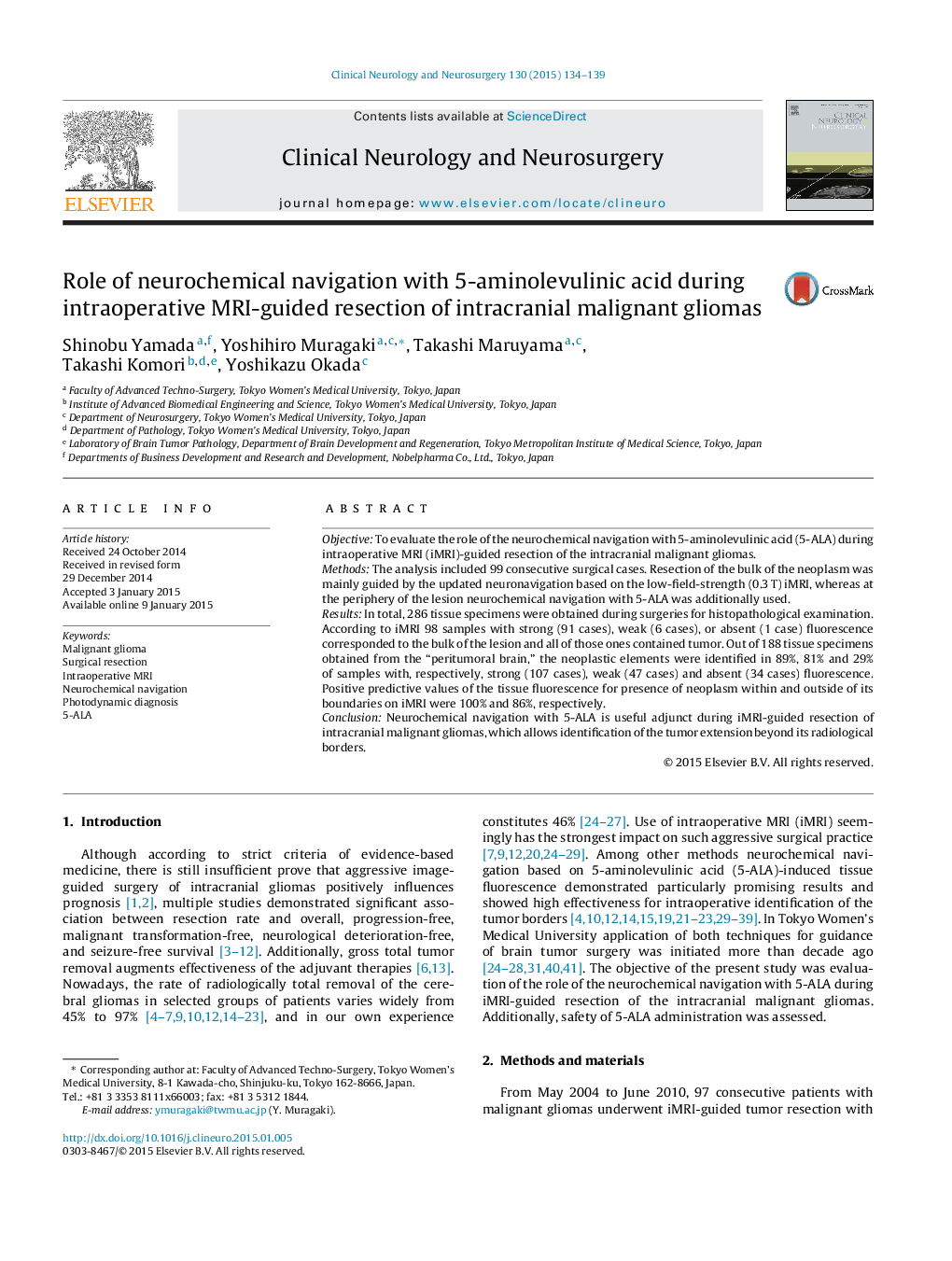| Article ID | Journal | Published Year | Pages | File Type |
|---|---|---|---|---|
| 6006452 | Clinical Neurology and Neurosurgery | 2015 | 6 Pages |
â¢5-ALA reveals tumor extension beyond its boundaries on intraoperative MRI.â¢Intraoperative MRI and 5-ALA have complimentary role during brain tumor resection.â¢Aggressive resection of malignant gliomas results in high early morbidity rate.â¢Morbidity at 3 months after aggressive resection of gliomas seems acceptable.
ObjectiveTo evaluate the role of the neurochemical navigation with 5-aminolevulinic acid (5-ALA) during intraoperative MRI (iMRI)-guided resection of the intracranial malignant gliomas.MethodsThe analysis included 99 consecutive surgical cases. Resection of the bulk of the neoplasm was mainly guided by the updated neuronavigation based on the low-field-strength (0.3Â T) iMRI, whereas at the periphery of the lesion neurochemical navigation with 5-ALA was additionally used.ResultsIn total, 286 tissue specimens were obtained during surgeries for histopathological examination. According to iMRI 98 samples with strong (91 cases), weak (6 cases), or absent (1 case) fluorescence corresponded to the bulk of the lesion and all of those ones contained tumor. Out of 188 tissue specimens obtained from the “peritumoral brain,” the neoplastic elements were identified in 89%, 81% and 29% of samples with, respectively, strong (107 cases), weak (47 cases) and absent (34 cases) fluorescence. Positive predictive values of the tissue fluorescence for presence of neoplasm within and outside of its boundaries on iMRI were 100% and 86%, respectively.ConclusionNeurochemical navigation with 5-ALA is useful adjunct during iMRI-guided resection of intracranial malignant gliomas, which allows identification of the tumor extension beyond its radiological borders.
